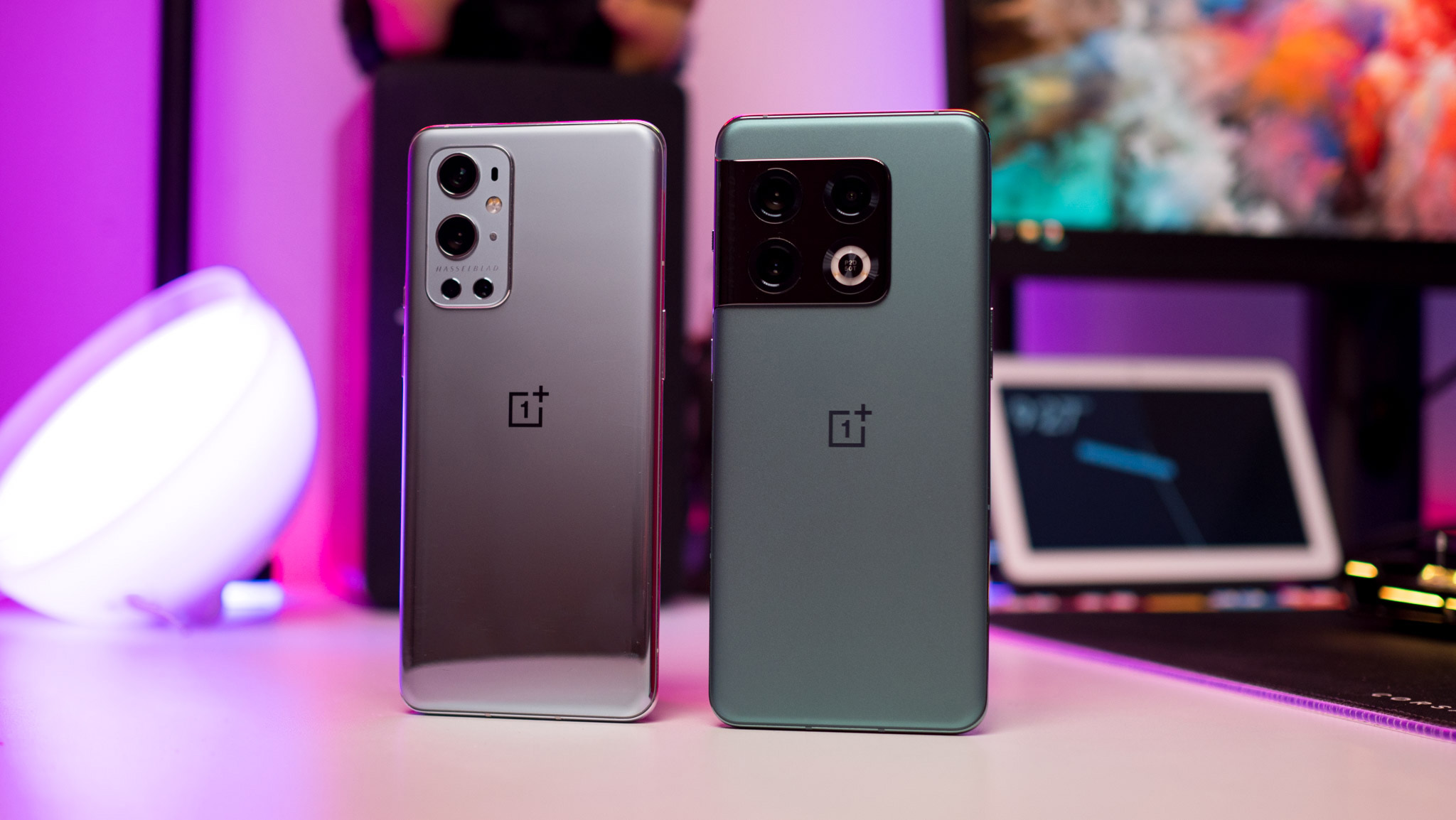No OnePlus 10 phone yet, but here's why it likely hasn't been announced
People still want a vanilla phone without Pro features

If a OnePlus 10 model existed, we would have heard something more about it by now, and likely, its inexistence is due to the new direction OnePlus is taking with its brand, experts say.
OnePlus launched the 10 Pro in China in January, and that announcement did not include the base 10 model. Along with it being one of the best Android phones out there, It is also the first device that OnePlus launched since it became OPPO’s new sub-brand.
Android Central’s Michael Hicks writes that at this point, “most conventional wisdom suggests the OnePlus 10 is canceled,” with the OnePlus 10R taking its place on the calendar. Techradar also reported that it went to a MWC 2022 briefing with OnePlus founder Pete Lau, who “confirmed its flagship series would consist of just one phone - the OnePlus 10 Pro.”
Jitesh Ubrani, research manager for IDC’s worldwide device tracker, says he isn’t sure if the phone will come out and that “I think by now we would’ve seen some indications were it ready to launch.”
He adds that it’s likely that one of the reasons the phone hasn’t come to light could be “due to component shortages that prevailed over the last 18 months and the merge with OPPO.”
“The absence of the OP10 would reduce cannibalization and help OPPO expand into new market segments or push further into segments where it already performs well. Moreover, the last year’s OP models can still help satisfy demand at the lower price points,” he says.
OP has so many models already, it’s time for a change

Neil Shah, vice president of research at Counterpoint Research, agrees with Ubrani that the launch of the vanilla 10 model would just be redundant.
Get the latest news from Android Central, your trusted companion in the world of Android
“Considering OnePlus has recently launched the OnePlus 9RT 5G models and OnePlus 9 Pro 5G still in the portfolio, the OnePlus 10 would have been a redundant model. This could be an opportunity for OnePlus to spread out their launch cycle over the year into roughly four launches — OnePlus 9RT (Q1), OnePlus 10 Pro (Q2), OnePlus 10, or called something else (likely in Q3), OnePlus 10T (Q4). Though I won’t be surprised even if OnePlus axes OnePlus 10 as I said, OnePlus 9RT/9 Pro can still have another shelf life of 9 months,” he says.
Shah notes that if any of these decisions were to take place, it would all depend on OPPO and what the company believes is the right strategy considering the branding.
Anshel Sag, a senior analyst at Moor Insights & Strategy, adds that likely OnePlus is more focused on flagship devices because that drives consumer interest in the brand.
“It seems as though the non-pro version hasn’t been selling as well as the lower-cost devices, so I think they are more focused on the high-end for brand reputation right now,” he says.
Though despite all of that, OnePlus doesn’t really make a dent in global market shares. According to data from IDC, globally, OnePlus had a 0.9% share in 2021, up from 0.5% in 2020. In North America, the company ranked seven, with a 1.7% market share in 2021; this is up 0.5% in 2020. India is one of their strongest markets, and they only held a 2.5% market share in 2021, up from 1.7% in 2020.
Shah says that this year is critical for the brand as it expands its portfolio in North America with mid-range devices like the Nord.
“Obviously, launching phones in the U.S. is challenging considering this is a carrier-driven model market requiring certifications, marketing budgets, and channel support and training,” he says.
China-first launch was strategic and necessary

It’s been written about before on Android Central, but there was a very strategic reason why the OnePlus 10 Pro launched in China first.
Experts weighed in and said that it made sense from a competitive standpoint.
Sag adds that it was clear the company wanted to fix any bugs earlier and address any potential issues before it became available to the global market. Though he doesn’t think this move might not “represent the OnePlus brand well.”
Ubrani says it was done so to cater to the largest OnePlus audience and to ensure a timely Chinese New Year launch.
“All this was done during supply shortages, and it gave them more time to work on the software experience,” he says.
There are many customers who still care about a vanilla model

Despite the lower penetration of OnePlus, Sag says that there are still a number of customers who would want a base One Plus 10 model.
“Especially the people that want most of the OnePlus 10 features without paying for the Pro’s premium pricing,” he says, adding that likely the company is going in the direction of launching a mid-range model.
“That may already be part of the new strategy. I think OnePlus genuinely wants to best fit where its customers need it to be, and that might not be with a more basic flagship model but rather a better mid-range model,” he notes.
And if OnePlus was going to launch a base 10 model, Sag says that it likely will be limited to markets where the brand has seen better sales of the non-pro variant. He adds that price competitiveness might also be a factor as well.
That being said, Ubrani doesn’t think a base 10 model is relevant to a North American audience, nor would it serve well for OnePlus to launch a mid-range device to replace a potential base model.
“In North America, it’s less relevant due to the launch of the Pixel 6. In other markets, there are also many competing smartphones and some from OPPO, so I think consumers probably won’t miss the OP10,” he says. “Globally, the premium segment has been outperforming the mid-range from a growth perspective, so I don’t think launching a mid-range phone instead of a flagship would be a better strategy. Rather, by having one flagship option, the 10 Pro, OnePlus can nudge consumers to buy up the stack.”
And Shah adds that adding a mid-range device doesn’t make sense, noting that a couple of years ago, when OnePlus had two to three models in their portfolio and annual road map, it would have made sense to add a second or lite model.
“But now the OnePlus portfolio is too broad and launching more models has somewhat diluted the Apple-like brand promise as it has fragmented the portfolio and can see with the lapse in software updates as well,” he says.
We still don’t know if we will get a OnePlus 10 base model, and if we did, we would have heard some rumors. AC’s Hicks notes that while Lau said only the 10 Pro exists, leakers have strongly hinted at a 10 Ultra.
It’s worth adding that OnePlus has never released an Ultra-modeled phone before, always stopping at the Pro.
Like Ubrani notes, as the OnePlus 10 base model could cannibalize the 10 Pro sales, the same could be the case if there was an Ultra model.

Shruti Shekar is Android Central's Editor-in-Chief. She was born in India, brought up in Singapore, but now lives in Toronto. She started her journalism career as a political reporter in Ottawa, Canada's capital, and then made her foray into tech journalism at MobileSyrup and most recently at Yahoo Finance Canada. When work isn't on her mind, she loves working out, reading, watching the Raptors, and planning what she's going to eat the next day.
